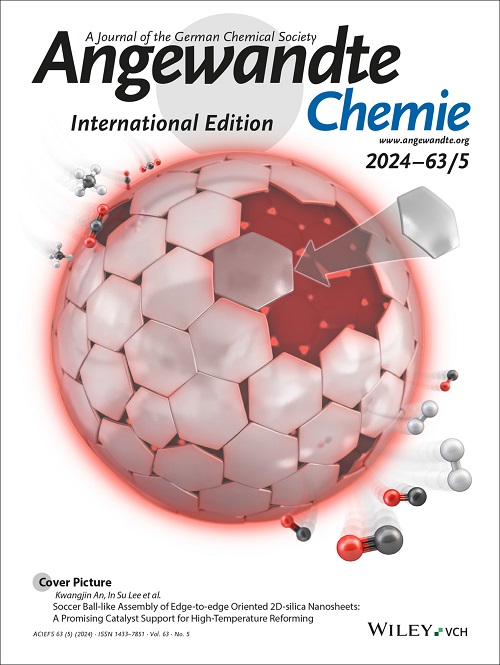Compacting Molecular Stacking and Inhibiting Self-Aggregation in Fullerene Transporting Layer for Efficient and Stable Perovskite Solar Cells
IF 16.1
1区 化学
Q1 CHEMISTRY, MULTIDISCIPLINARY
引用次数: 0
Abstract
The underdevelopment of electron transport layer (ETL) materials remains a critical bottleneck limiting the overall photovoltaic performance of inverted perovskite solar cells (PSCs). Fullerene derivatives, such as PCBM, are widely employed ETL materials in PSCs due to their excellent electron affinity and energy level alignment with perovskite layer. However, PCBM suffers from high energy disorder, self-aggregation predilection, and insufficient defect passivation ability, leading to significant charge carrier recombination and accumulation at interfaces. Herein, a phosphate-substituted fullerene derivative, FuPE, is developed to enhance the performance of PCBM-based ETLs for PSCs. Incorporating FuPE efficiently compacts molecular stacking, enforces crystallinity and intermolecular interaction, suppresses self-aggregation and improves interfacial compatibility for the FuPE:PCBM blend. Such endows the FuPE:PCBM blend film with enhanced electron mobility (0.183 cm2 V-1 s-1), lower trap density, more uniform film morphology, and superior defect-passivation ability, compared to the PCBM pristine one. Consequently, PSCs employing FuPE:PCBM achieve reduced trap-assisted recombination, enhanced charge carrier extraction, and thus a remarkable power conversion efficiency exceeding 26% alongside improved operational stability. This work highlights an effective strategy for optimizing fullerene-based ETLs, advancing the development of highly efficient and durable PSCs.求助全文
约1分钟内获得全文
求助全文
来源期刊
CiteScore
26.60
自引率
6.60%
发文量
3549
审稿时长
1.5 months
期刊介绍:
Angewandte Chemie, a journal of the German Chemical Society (GDCh), maintains a leading position among scholarly journals in general chemistry with an impressive Impact Factor of 16.6 (2022 Journal Citation Reports, Clarivate, 2023). Published weekly in a reader-friendly format, it features new articles almost every day. Established in 1887, Angewandte Chemie is a prominent chemistry journal, offering a dynamic blend of Review-type articles, Highlights, Communications, and Research Articles on a weekly basis, making it unique in the field.

 求助内容:
求助内容: 应助结果提醒方式:
应助结果提醒方式:


